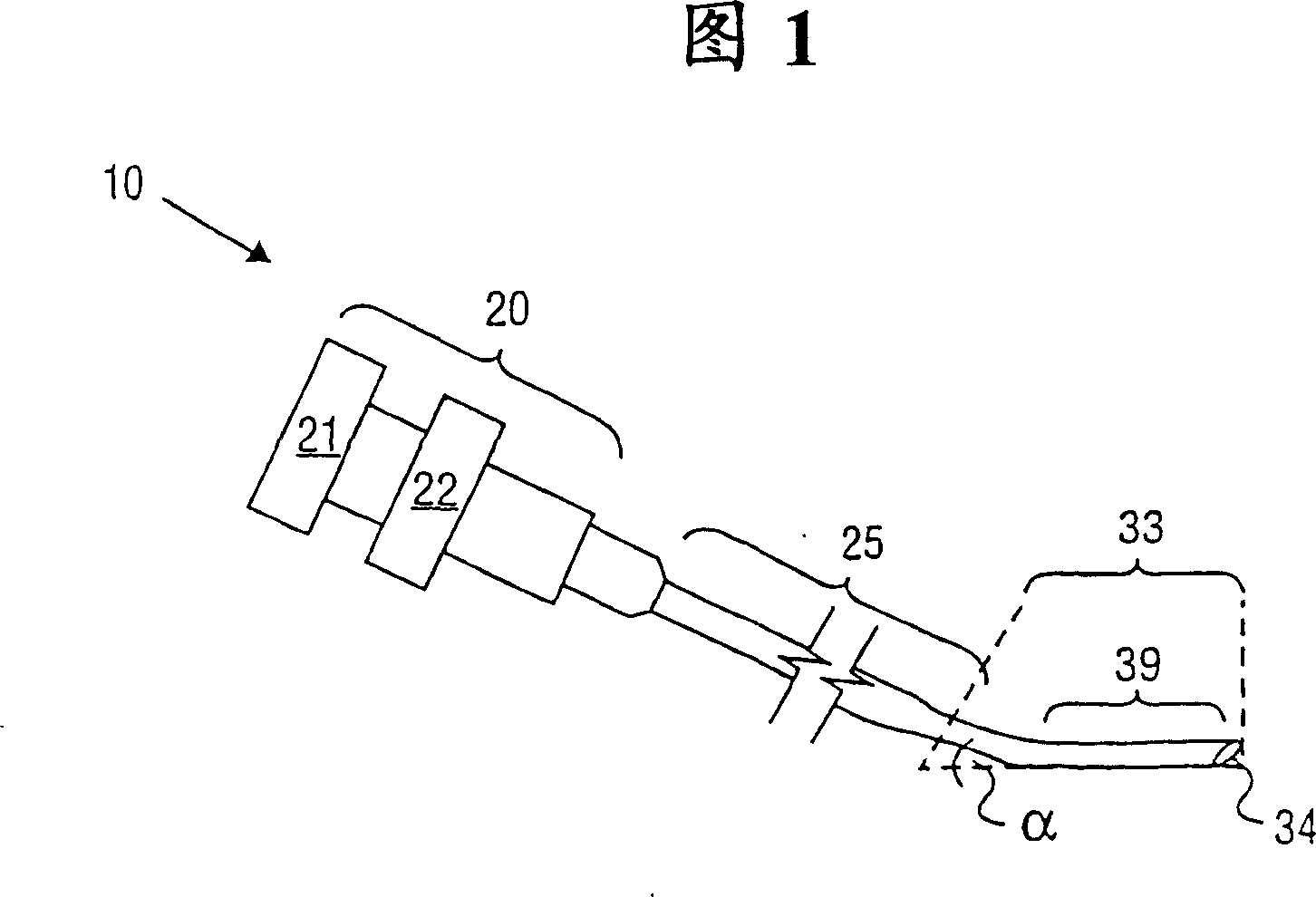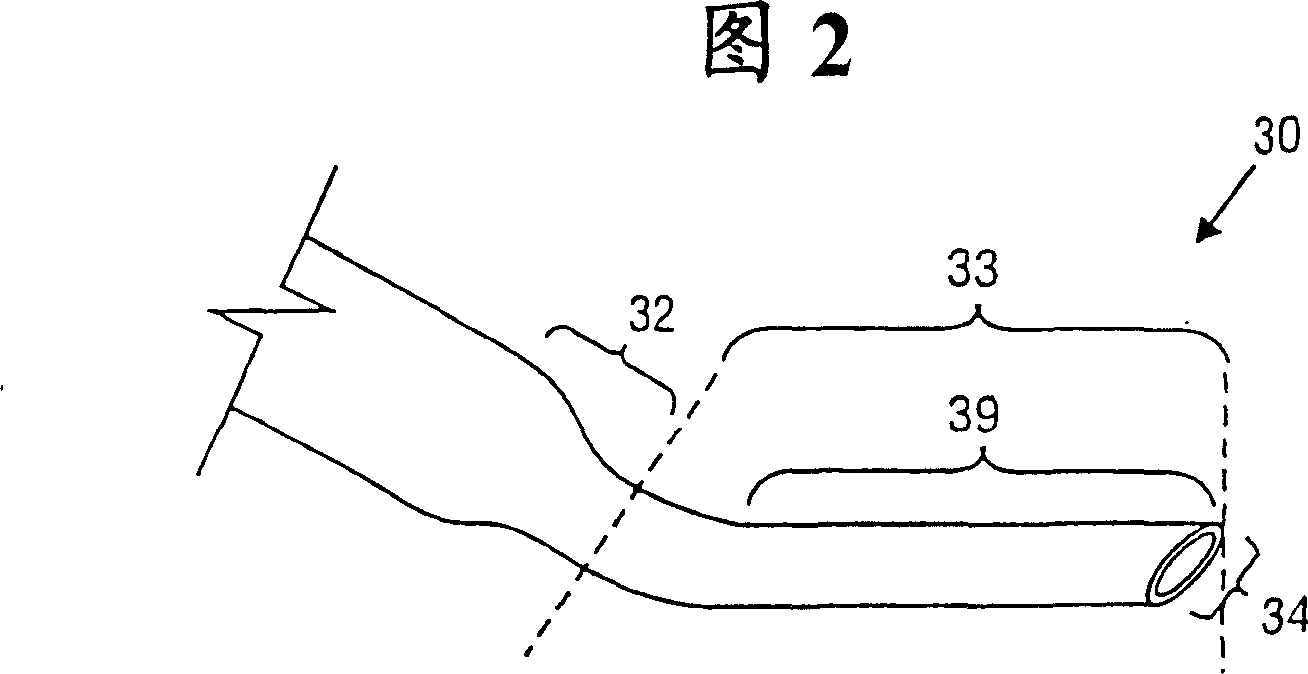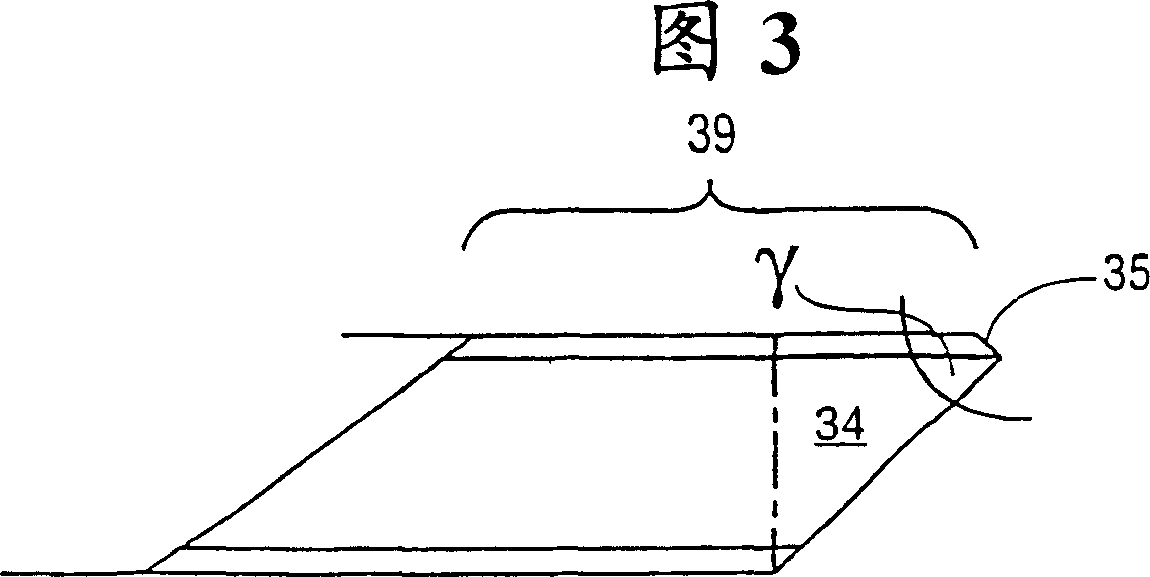Minisize catheter for embryo transplantation by using endoscope
An embryo transfer and catheter technology, applied in endoscopes, endoscope cutting instruments, applications, etc., can solve problems such as embryo damage, suboptimal results, and decreased success rate of IVF eggs
- Summary
- Abstract
- Description
- Claims
- Application Information
AI Technical Summary
Problems solved by technology
Method used
Image
Examples
Embodiment Construction
[0026] Referring now to the drawings, FIGS. 1 to 3 show one embodiment of a microcatheter. In this embodiment, a microcatheter 10 includes a movable syringe 20 with a plunger 21 connected to a flexible hollow shaft 25. Proximal end 22, the distal end of the hollow shaft forms a shaped end 30, which in one embodiment may be attached to a smooth locking mount.
[0027] Shaft 25 forms a lumen therethrough, typically for the introduction of one or more embryos into the uterus of a human. In one embodiment, shaft 25 is made of extruded polymer plastic. A suitable polymer for shaft 25 is preferably polycarbonate (eg, clear polycarbonate). Tetrafluoroethylene (such as TEFLON TM ) materials are also very suitable. The outer diameter of the proximal portion of the shaft 25 is on the order of 1 millimeter or less, and the shaft 25 includes a distal portion having a shaped end 30 .
[0028] The shaped tip 30 of the microcatheter 10 includes a base 31 having a diameter similar to that...
PUM
 Login to View More
Login to View More Abstract
Description
Claims
Application Information
 Login to View More
Login to View More - R&D Engineer
- R&D Manager
- IP Professional
- Industry Leading Data Capabilities
- Powerful AI technology
- Patent DNA Extraction
Browse by: Latest US Patents, China's latest patents, Technical Efficacy Thesaurus, Application Domain, Technology Topic, Popular Technical Reports.
© 2024 PatSnap. All rights reserved.Legal|Privacy policy|Modern Slavery Act Transparency Statement|Sitemap|About US| Contact US: help@patsnap.com










